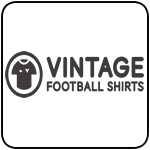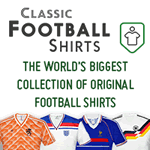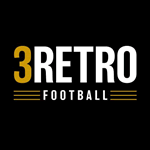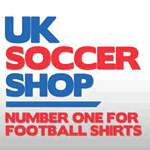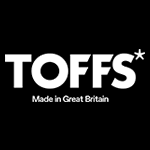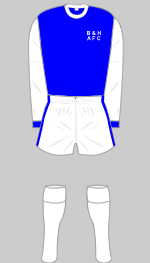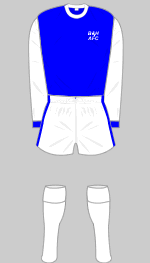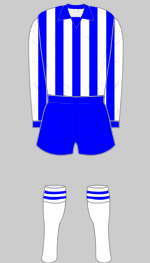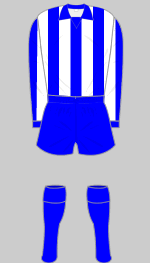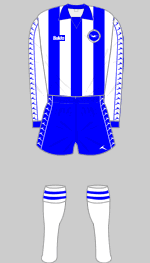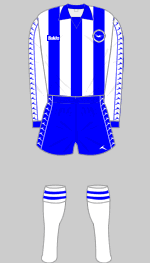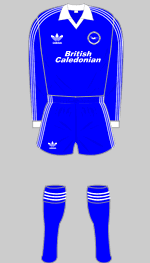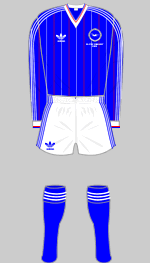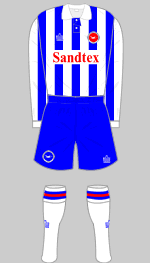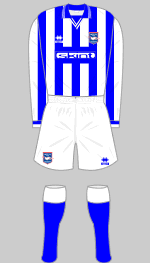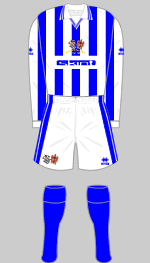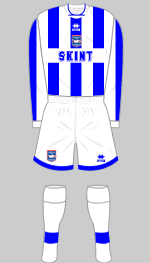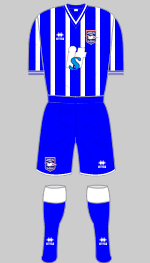Kit History
Brighton United
1898-1900
Club wound up
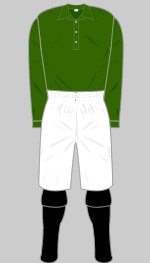
1898-1899 s
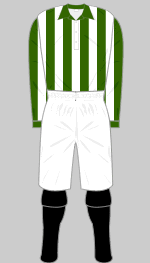
1899-1900 s
Brighton & Hove Rangers
1900
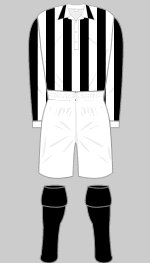
1900-1901 s
Brighton & Hove Albion
1901
Formerly Brighton & Hove Rangers
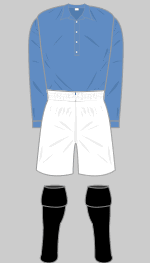
1901-1903 m s
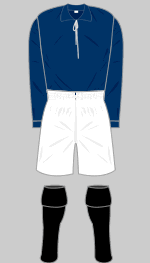
1903-1904 m s
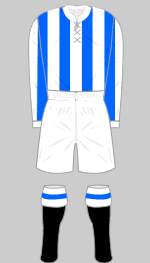
1904-1905 b m s
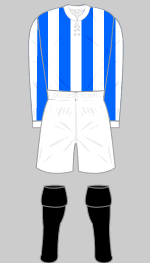
1905-1907 m s u
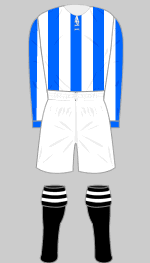
1907-1908 s
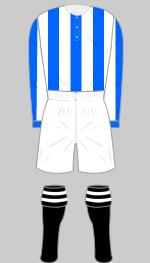
1908-1910 s
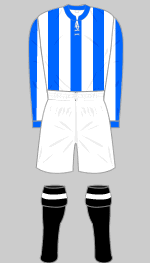
1910-1912 s
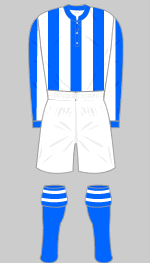
1912-1914 s
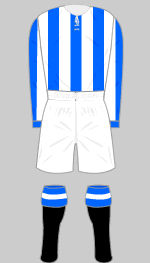
1914-1915 s B
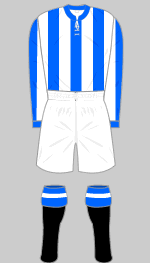
1917-1918 v
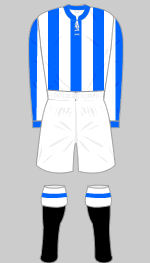
1919-1922 s
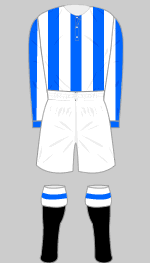
1922-1924 s
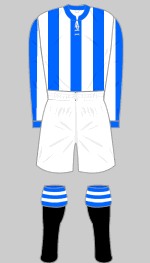
1924-1932 s v
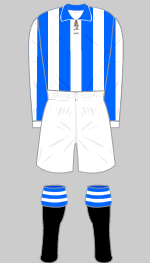
1932-1933 c m s
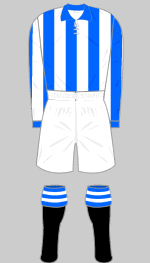
1933-1934 s
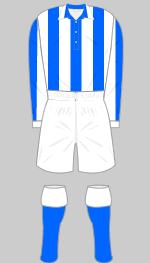
1934-1935 s u
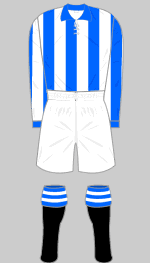
1935-1936 s
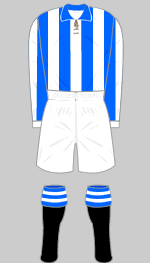
1936-1938 s
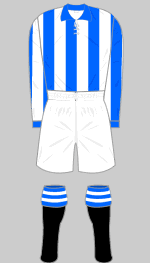
1938-1939 s
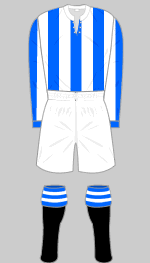
1939-1944 s
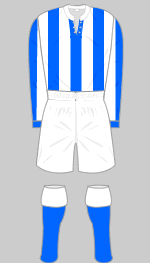
1944-1945 s
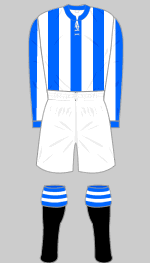
1945-1946 s
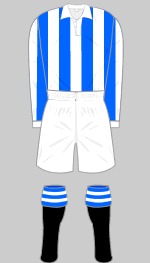
1946-1947 s
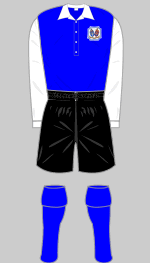
1948-1950 m s
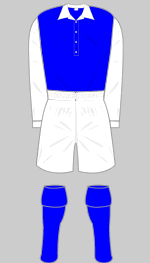
1950-1951 m
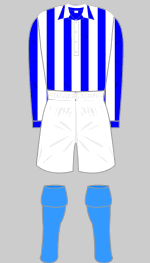
1951-1952 m s
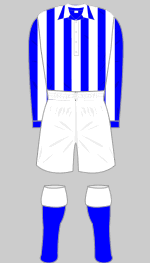
1952-1953 m
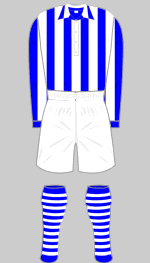
1953-1954 m
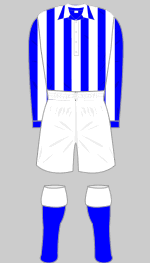
1954-1955 s
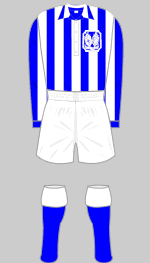
1955-1956 s
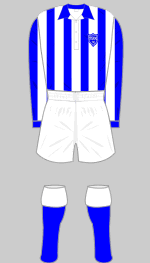
1956-1957 s
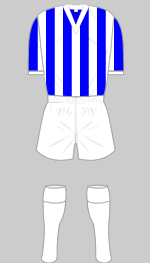
1957-April 58 s
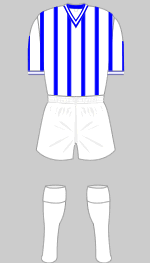
April-Sept 58 b m s z
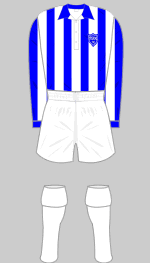
Sept 1958-1959 s
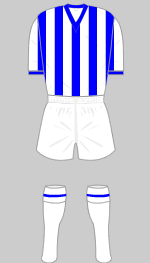
1959-1960 s y
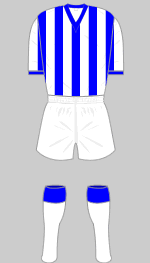
1959-1960 alt s
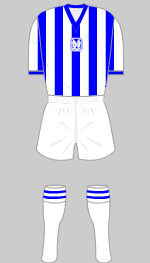
1960-1961 e m s
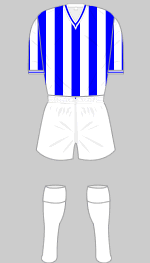
1961-1963 s A
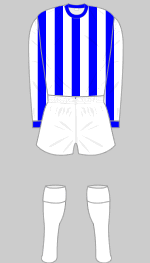
1963-1964 f m
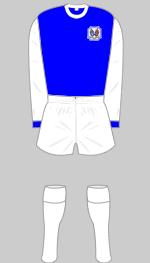
1964-1967 m v
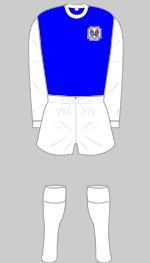
1967-1968 s
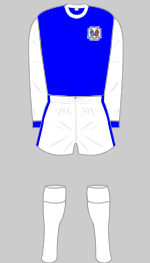
1969-Jan 1970 s
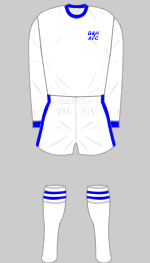
1970-1971 m s
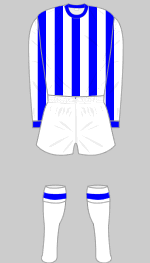
1971-Jan 1972 i
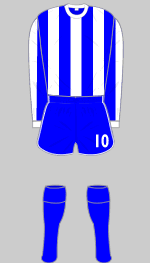
Jan-March 72 s B
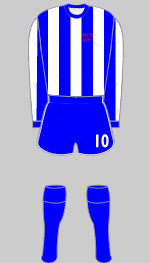
March-May 72 b m s B

Aug-Nov 1972 s B
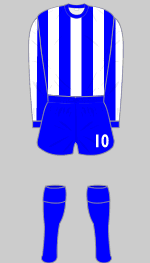
Dec 72-Feb 73 B
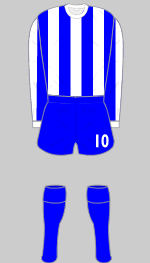
March-May 1973
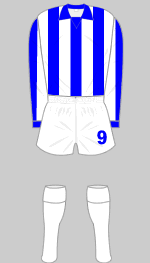
1 Dec 1973 x
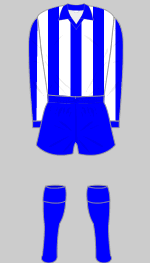
April 1974 g s
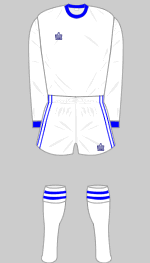
1974-1975 m r
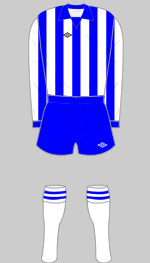
1975-Jan 1977 b m q r
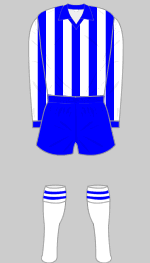
early 1977 s
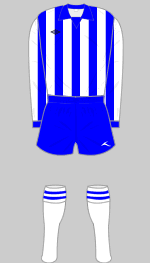
April - May 1977 s
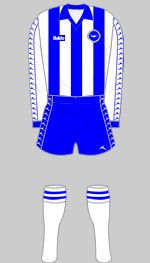
March 1979-1980 s
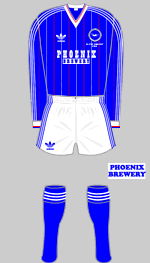
Oct 1983-1984 l s
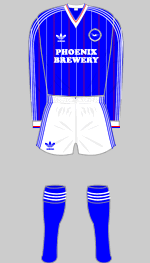
1984-1985 l s
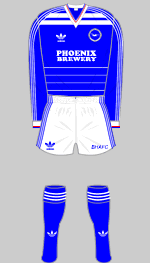
1985-1986 l s
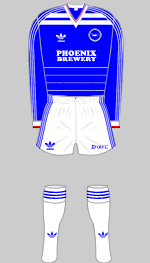
1985-1986 alt s
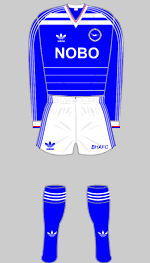
1986-1987 l s
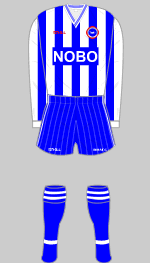
1987-1988 h s
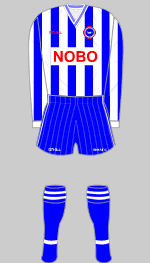
1988-1989 s
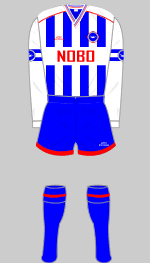
1989-1991 b s
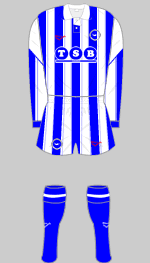
1991-1993 b o s
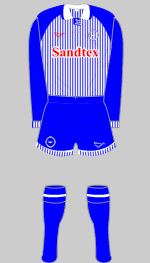
1993-1994 l s
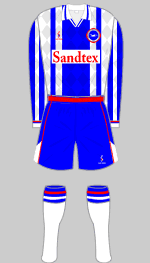
Aug 1997 s
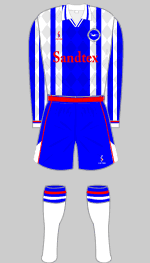
Sept 1997-1998 h p s
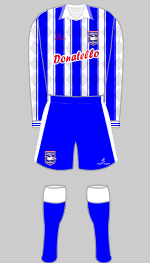
1998-1999 k s
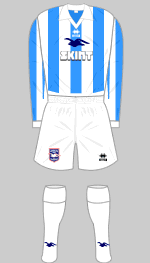
2004-2006 k
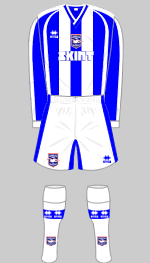
2006-2008 a
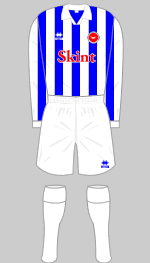
7 April 2007 s
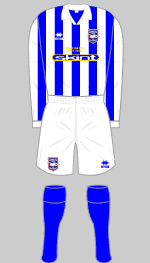
May 2008 a
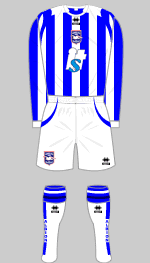
2008-2010 a
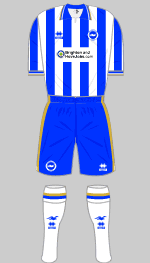
2011-2013 a
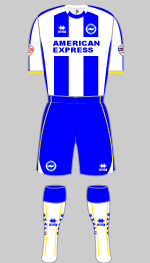
2013-2014 a
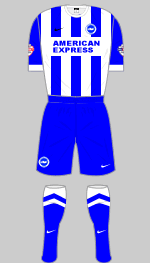
2014-2016 a
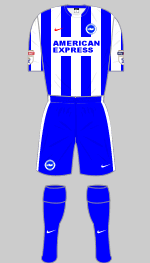
2016-2017 a
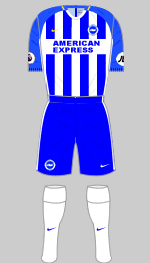
2017-2018 a
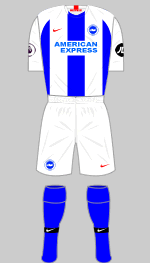
2018-2019 a
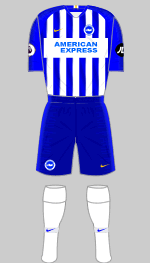
2019-2020 a
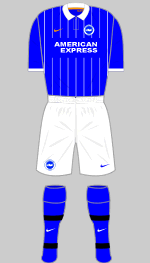
2020-2021 a
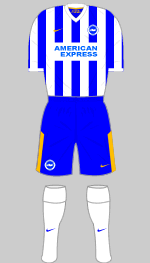
2021-2022 a
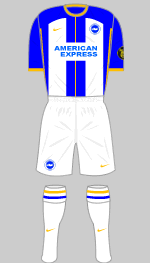
2022-2023 a

2023-2024 a *
Background
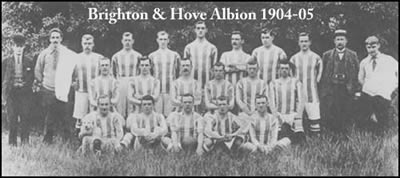 Towards the end of the nineteenth
century Brighton grew in importance through association with the Prince
of Wales who built the famous Brighton Pavilion and as a seaside retreat
for Londoners. In 1898 the town's first professional association football club, Brighton United, was formed and was elected to the Southern League First Division. United folded in March 1900 but some of the former members and players formed a new team which combined with North End Rangers and was named Brighton & Hove Rangers.
Towards the end of the nineteenth
century Brighton grew in importance through association with the Prince
of Wales who built the famous Brighton Pavilion and as a seaside retreat
for Londoners. In 1898 the town's first professional association football club, Brighton United, was formed and was elected to the Southern League First Division. United folded in March 1900 but some of the former members and players formed a new team which combined with North End Rangers and was named Brighton & Hove Rangers.
Chris Worrall's research for HFK indicates that the original Brighton United wore green and white and that when the new Brighton & Hove Rangers were formed, they adopted black and white stripes. After a season playing friendly and cup games, the club dropped "Rangers" from its name and was briefly was known as Brighton & Hove FC before adding "Albion" immediately before they joined the Southern League Second division for the 1901-02 season.
In John Vinnicombe's book, Albion - An Illustrated History (1978), the author suggests the new name may have been inspired by the association that one of the founders, John Jackson, previously had with West Bromwich Albion. Carder & Harris, describe Albion's colours in 1901-02 as "fisherman's blue" in their book, Seagulls - The Story of Brighton & Hove Albion (1993). Photographs in this book suggest these were a pale colour and were superceded in 1903 by darker shirts before the familiar stripes were adopted in 1904.
Albion were soon promoted to the Southern League First Division and moved into the Goldstone Ground in Hove, a genteel town adjoining Brighton itself. In 1904 they adopted the blue and white stripes that have become the club's trademark but in a distinctly paler shade than worn today.
In 1911 Albion were Southern League champions and then defeated Aston Villa the champions of the Football League to win the Charity Shield and were dubbed, locally at least, "Champions of England." Ten years later, the Southern League First Division was absorbed into the Football League and Brighton became founder members of the new Third Division. It took 38 years for the club to win promotion but in the interim they earned a reputation as cup giant killers, having beaten Everton, Sheffield United and Chelsea at the Goldstone Ground.
The Football Encyclopedia of 1934 records the club's colours as red, white and blue stripes and this has gained credence down the years. There is, however, no evidence that this kit ever existed and the description appears to be one of several in this book. Chris Worrall has, on the other hand, established that a local gents' outfitter sponsored an FA Cup match in 1934 against Bolton and kitted out the Albion players in checkered (probably argyle pattern) stockings. These were met with universal derision by the crowd and never seen again (until they were reproduced in HFK's Room 101).
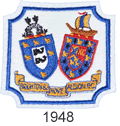 After the Second World War the club played in their old striped shirts until 1947 when they switched to royal blue shirts with white sleeves. Clubs had to collect clothing rations to replace their kits at the time and it is possible that they were unable to source their usual tops. The traditional twin crest of Brighton and Hove was adopted as the club badge, appearing on players' shirts for the first time in 1948. This reappeared several
After the Second World War the club played in their old striped shirts until 1947 when they switched to royal blue shirts with white sleeves. Clubs had to collect clothing rations to replace their kits at the time and it is possible that they were unable to source their usual tops. The traditional twin crest of Brighton and Hove was adopted as the club badge, appearing on players' shirts for the first time in 1948. This reappeared several 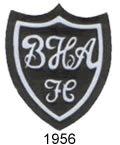 times in the Fifties and Sixties while a shield with the club's initials in calligraphic style was used in 1956-57 and 1958-59.
times in the Fifties and Sixties while a shield with the club's initials in calligraphic style was used in 1956-57 and 1958-59.
In 1958, Brighton won the Third
Division South championship and for the next four seasons they played
in Division Two only to fall all the way down to the Fourth Division in
1963. A change of strip had the desired effect in 1964-65 when Albion
were Division Four champions with a remarkable average home gate of 18,000,
proof of the potential 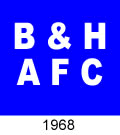 drawing power of this south coast club. The twin crests were used for some seasons while a simple monogram appeared in others up until 1972. (The lettering was initially in block capitals but after 1970 a more elaborate script font was used.)
drawing power of this south coast club. The twin crests were used for some seasons while a simple monogram appeared in others up until 1972. (The lettering was initially in block capitals but after 1970 a more elaborate script font was used.)
In 1972
they won promotion to Division Two for the second time but they were relegated
immediately. Between August 1972 and May 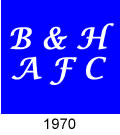 1977, no crests were worn at all.
1977, no crests were worn at all.
In 1973 the club's ambitious chairman, Mike Bamber, caught the national media's attention when he persuaded Brian Clough and Peter Taylor to take over fresh from guiding Derby County to the League championship. Clough moved on quickly but Taylor stayed to lay the foundation of a strong side. In 1974, wearing all-white (a kit worn for a single season four seasons earlier) the club was nicknamed "The Dolphins" (Brighton's coat-of-arms features the marine mammal) but this name did not stick. A crest was designed with a dolphin but it never appeared on the team's shirts.
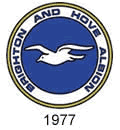 Prior to a home game with their strongest rivals, Crystal Palace, visiting fans in the Bo'sun pub started a chant of "Eagles! Eagles!" A group of Brighton supporters responded with "Seagulls! Seagulls!" and this immediately became their recognised nickname. That season Alan Mullery took the team back into Division Two and the following
year Albion narrowly missed out on promotion, Spurs taking the honours
on goal difference. A new badge was introduced, featuring a seagull, which remained their official crest until 1998. At this time, an average of 25,000 fans packed themselves
into the Goldstone Ground every other Saturday. In 1979, the club was
promoted to the First Division where they would remain
Prior to a home game with their strongest rivals, Crystal Palace, visiting fans in the Bo'sun pub started a chant of "Eagles! Eagles!" A group of Brighton supporters responded with "Seagulls! Seagulls!" and this immediately became their recognised nickname. That season Alan Mullery took the team back into Division Two and the following
year Albion narrowly missed out on promotion, Spurs taking the honours
on goal difference. A new badge was introduced, featuring a seagull, which remained their official crest until 1998. At this time, an average of 25,000 fans packed themselves
into the Goldstone Ground every other Saturday. In 1979, the club was
promoted to the First Division where they would remain 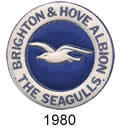 for four seasons.
for four seasons.
In 1980 Adidas became the club's kit supplier and for some reason, the traditional striped shirts were abandoned in favour of plain blue. The crest was slightly modified with "The Seagulls" added. In 1983, The Seagulls reached the
FA Cup final and, despite having 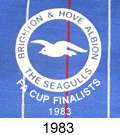 been relegated, famously held Manchester
United to a 2-2 draw before crashing 0-4 in the replay.
been relegated, famously held Manchester
United to a 2-2 draw before crashing 0-4 in the replay.
Serious decline followed and in 1992, Brighton
were relegated to the new Endsleigh Division Two, the old Division Three.
This was the season that they adopted striped shorts to complement their
striped shirts, a kit that was universally derided. Worse was to follow:
a financial crisis led to the directors selling the Goldstone ground for
development without a viable alternative stadium. Relegation followed
and supporters mounted a two-year campaign to oust the board. In 1996
Albion narrowly avoided relegation to the Conference and almost certain
oblivion in their final match. That year supporters created the Clubs
in Crisis web site, which successfully
mobilised community support not only for The Seagulls but for other League
clubs faced with extinction because of the clash between financial interests
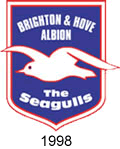 and local supporters.
and local supporters.
With a new board in control, a revised badge was introduced to mark a fresh start in 1998 but nevertheless the club endured a two-year ground share arrangement with Gillingham FC, some 70 miles away in Kent. A campaign to return the club to their home town met with limited success when the temporary use of the Withdean Stadium was negotiated. While facilities were far from adequate, it did allow the club to return to Sussex in 1999.
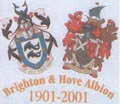 Despite all these problems, Brighton is fortunate
in having the strong support of the local community, which includes celebrity
fans such as Norman Cook, otherwise known as DJ Fat Boy Slim, whose company,
Skint Records, sponsored the club. In 2000-2001, the club celebrated its centenary and to mark the occasion, the twin crests were revived, this time in full colour and much larger than usual. After storming to successive championships
2001 & 2002, they climbed back to Nationwide Division One
Despite all these problems, Brighton is fortunate
in having the strong support of the local community, which includes celebrity
fans such as Norman Cook, otherwise known as DJ Fat Boy Slim, whose company,
Skint Records, sponsored the club. In 2000-2001, the club celebrated its centenary and to mark the occasion, the twin crests were revived, this time in full colour and much larger than usual. After storming to successive championships
2001 & 2002, they climbed back to Nationwide Division One  and moved between the second and third tiers
since then.
and moved between the second and third tiers
since then.
The Errea kit of 2004-06 featured lighter blue stripes, a reference to the team's earlier colours: these shirts forsook the usual crest in favour of a centrally placed seagull. The 1998 badge was reinstated in 2006 when this strip was retired.
Meanwhile the campaign to secure a permanent home continued. In September 2007, some seven years after the first application for planning permission was submitted, and with £1m spent on legal fees, work began on detailed construction plans for Brighton's new stadium.
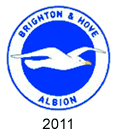 For the final game of the 2007-08 season, the team wore a specially commissioned kit to mark the end of the club's ten-year partnership with Skint Records.
For the final game of the 2007-08 season, the team wore a specially commissioned kit to mark the end of the club's ten-year partnership with Skint Records.
Promoted to the Championship at the end of the 2010-11 season, on July 31 2011, Albion officially opened their brand new home, The American Express Community Stadium, (usually known as the Amex) with a friendly against Spurs. Once again a special kit was worn for the occasion and a new crest unveiled. This revived the popular circular badge from the Seventies but with the gull flying in the opposite direction. The regular strips adopted that season reinstated 2" striped shirts with blue shorts with old gold trim to emphasise the occasion.
The club made a point of welcoming visiting supporters, lighting the wide concourses in their team's colours, importing local beers and opening up the bars after the match so supporters could mingle. With average attendances of 25,500 in 2012-13, capacity was increased to 30,000 in January and the team finished in the play-offs regularly over the following seasons.
After a 34-year absence, Brighton won automatic promotion to the top tier in 2017, missing out on the title to Newcastle on the last day of the season. The team consolidated in the top tier and in 2022-23, they finished in fifth place, qualifying for the UEFA Europa League, their first venture in Europe.
Sources
- a Seagulls Official Website
- b Football Focus
- c The West Ham United Collection 2003
- e Rotherham United FC - Images of Sport Gerry Somerton & Chas Robinson 2000
- f Gillingham FC - Images of Sport Roger Triggs 1999
- g Aldershot Has It Website
- h Kit Classics
- i Football Cards
- j Crewe Alexandra FC - Images of Sport Harold Finch 1999
- k empics
- l Kuen-Wah Cheung
- m Seagulls - The Story of Brighton & Hove Albion Tim Carder and Roger Harris submitted by Kuen-Wah Cheung
- n The Football Encyclopaedia (Associated Sporting Press 1934) submitted by Arthur Fergus
- o "Albion the First 100 years" Paul Camillin and Stewart Weir submitted by Kuen-Wah Cheung
- p David King
- q Ralph Pomeroy
- r Alick Milne
- s Chris Worrall - HFK Research Associate
- t Fabrizio Taddei (Errea)
- u My photo library
- v Keith Ellis
- w Stuart Knight
- x Nick Szczepanik
- y seniortigers.org.uk
- z Peter Stevenson
- A The Goldstone Wrap
- B Paul Galliford
* Kit graphic by Daniel Stoker
Crests are the property of Brighton & Hove Albion.
